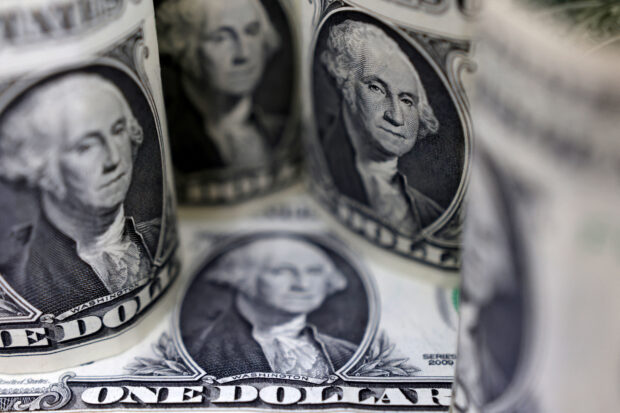
U.S. Dollar banknotes are seen in this illustration taken July 17, 2022. REUTERS/Dado Ruvic/Illustration/File photo
TOKYO/LONDON -The U.S. dollar hit a three-month low against a basket of peers on Tuesday before steadying, as traders continued to unwind long dollar positions before this week’s U.S. and euro zone inflation data.
The dollar index, a measure of the greenback against six major currencies, was last at 103.2 up around 0.1 percent on the day, edging off the 103.15 it touched in Asia trade, the lowest since Aug. 31.
The index is on track for a loss of more than 3 percent in November, its worst performance in a year.
“Markets have been wanting to get ahead of the next big theme – monetary easing, better conditions for risk assets and a weaker dollar – but as we’ve seen this morning, that’s starting to run out of steam,” said Simon Harvey, head of FX analysis at Monex Europe.
“Shorter term we’re keeping an eye on the general sentiment in markets – the big trade of this month has been long equities short dollar – and then these psychological levels – the euro has bumping against $1.0960 and each of its runs at that in the past week has been thwarted.”
The euro and sterling were broadly steady with the common currency at $1.09495 and the pound at $1.2627, both around their highest in about three months.
Market expectation that the Fed’s rate increase cycle has finally come to an end has also put downward pressure on the greenback. U.S. rate futures showed about a 25- percent chance that the Fed could begin cutting rates as early as March and increasing to nearly 45 percent by May, according to the CME FedWatch tool.
Traders are now eyeing U.S. core personal consumption expenditures (PCE) price index – the Fed’s preferred measure of inflation – this week for more confirmation that inflation in the world’s largest economy is slowing.
PCE tops off a slew of other key economic events this week, including flash inflation data from major euro zone economies, with bloc wide data due Thursday, Chinese purchasing managers’ index (PMI) data and OPEC+ decision.
After delaying its policy meeting to this Thursday, OPEC+ is looking at deepening oil production cuts, Reuters reported, citing an OPEC+ source.
The Japanese yen was steady at 148.63 per dollar, continuing its recovery from the brink of 152 per dollar earlier in the month as the dollar weakened.
The Swiss franc was at 0.8810 per dollar, steady on the day, also around its firmest since the start of September, and the Australian dollar briefly touched a near four-month high of $0.6632.
The kiwi momentarily hit its highest since Aug 10 at $0.6114 before sliding back. The Reserve Bank of New Zealand has its monetary policy meeting on Wednesday, where it is expected to keep interest rates steady at 5.5 percent for the fourth straight time.